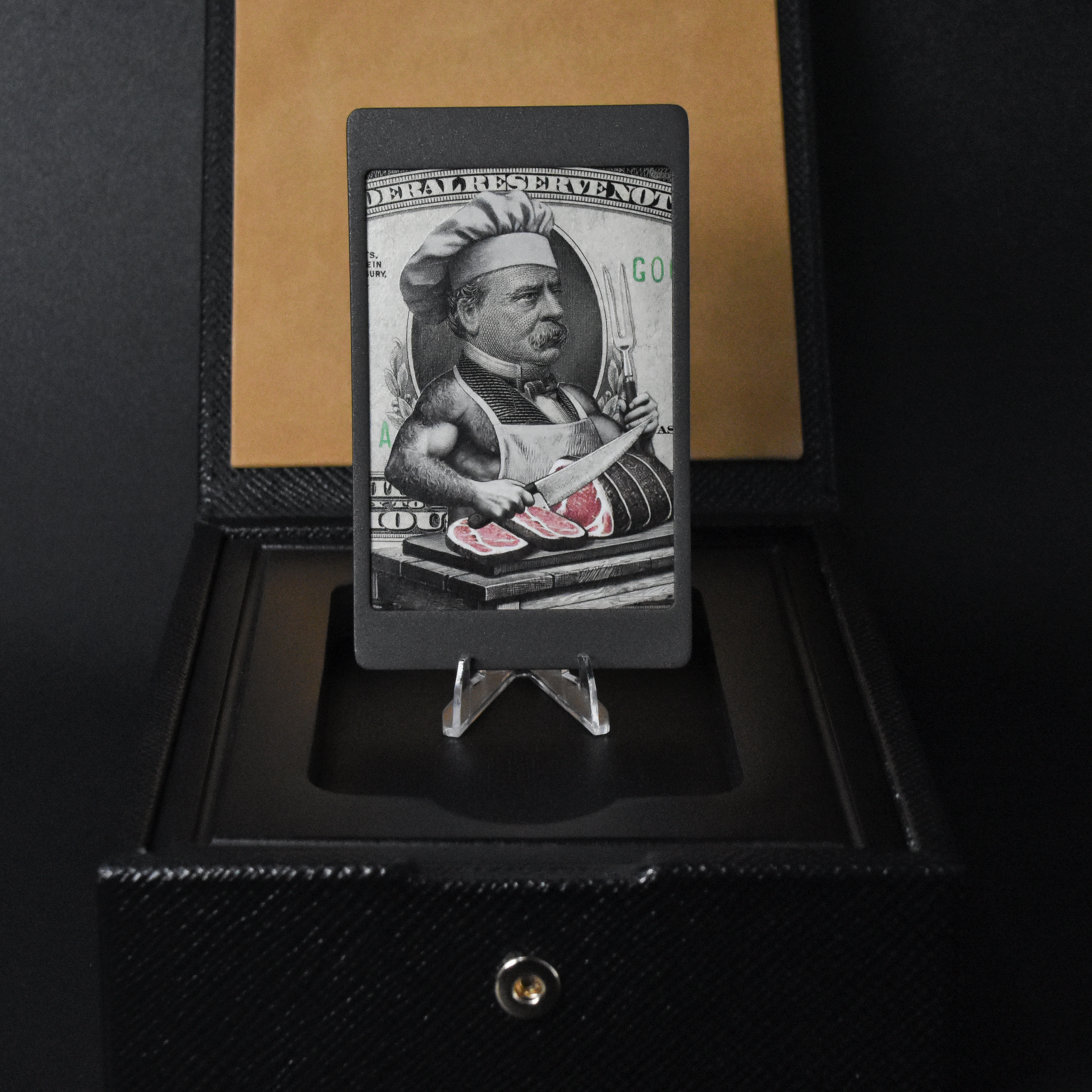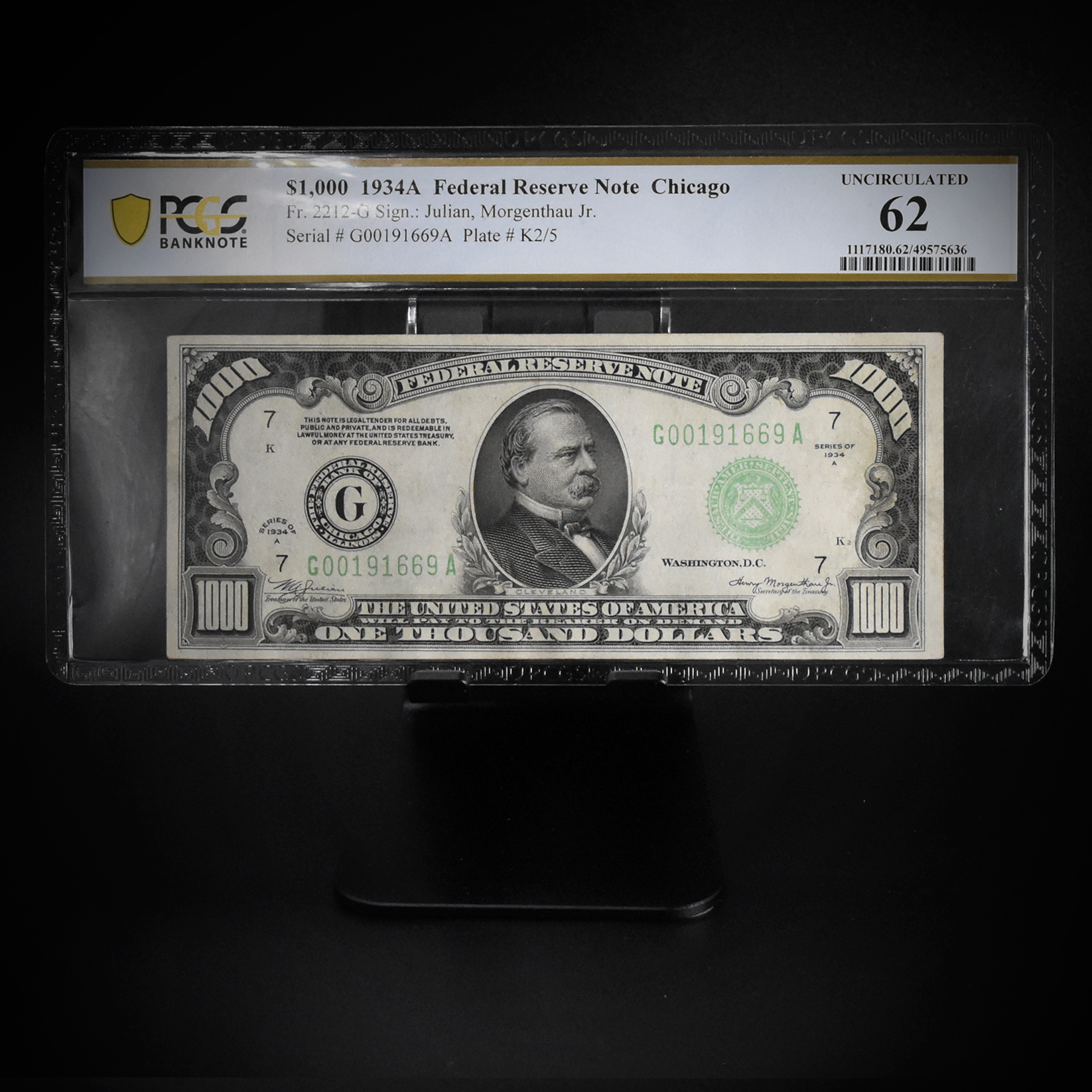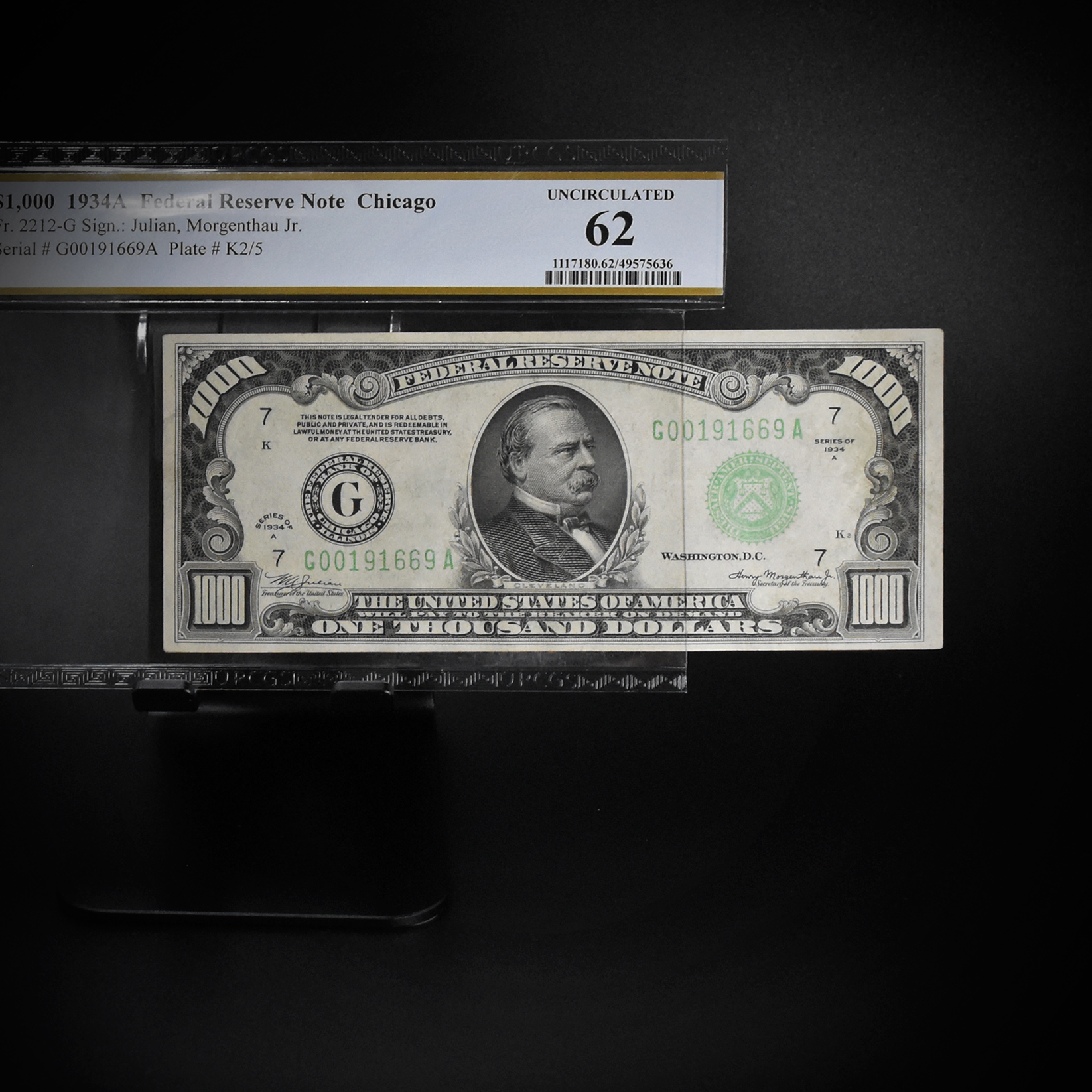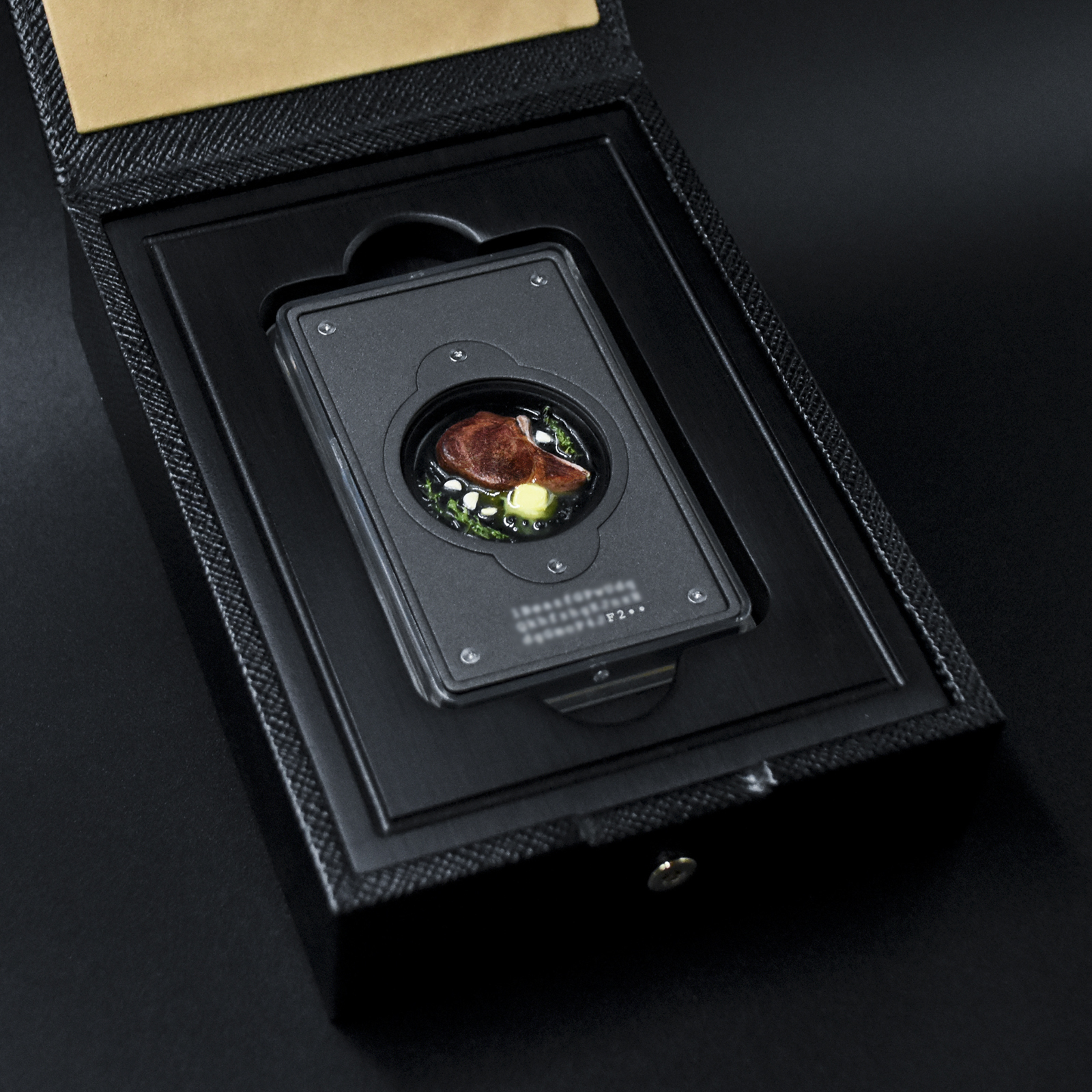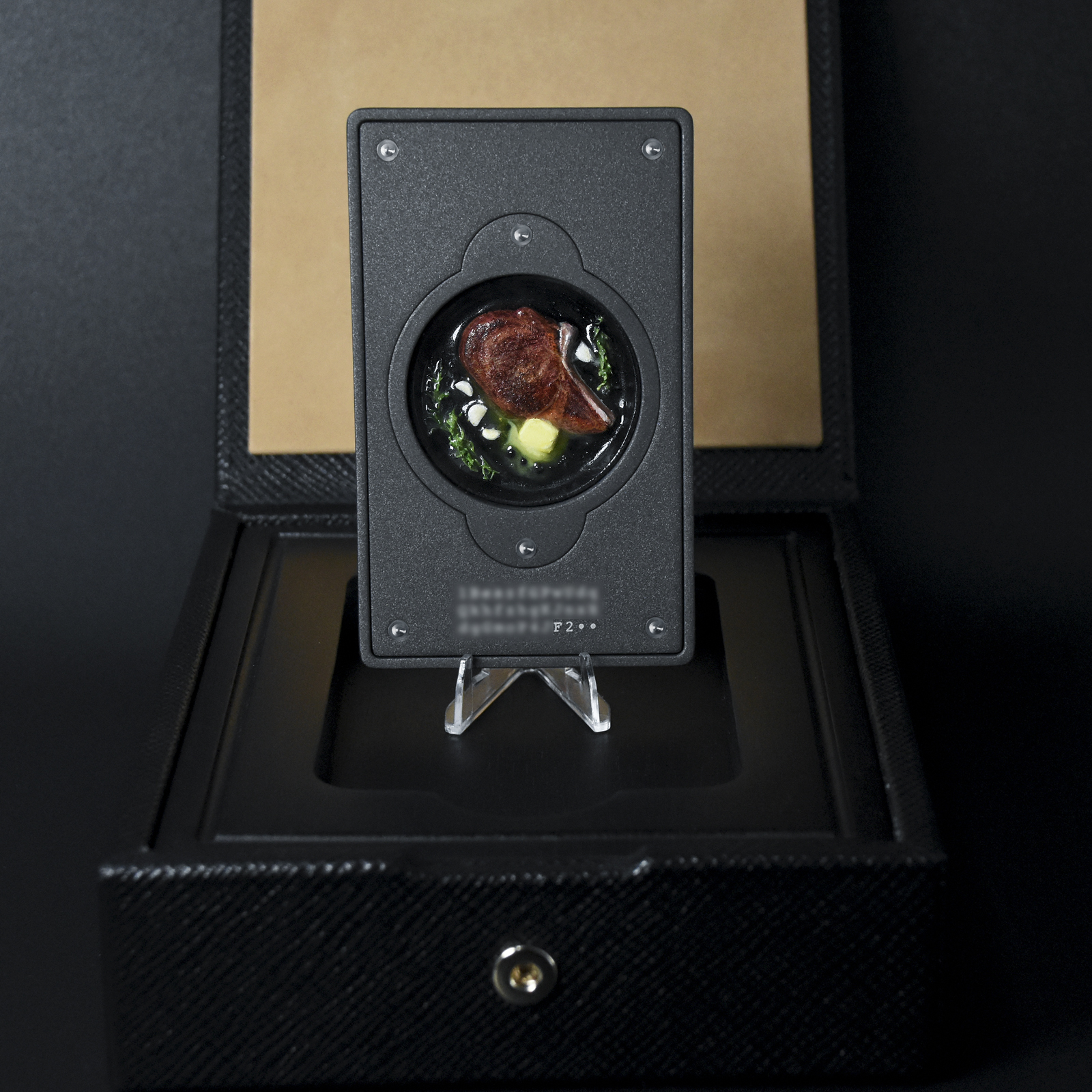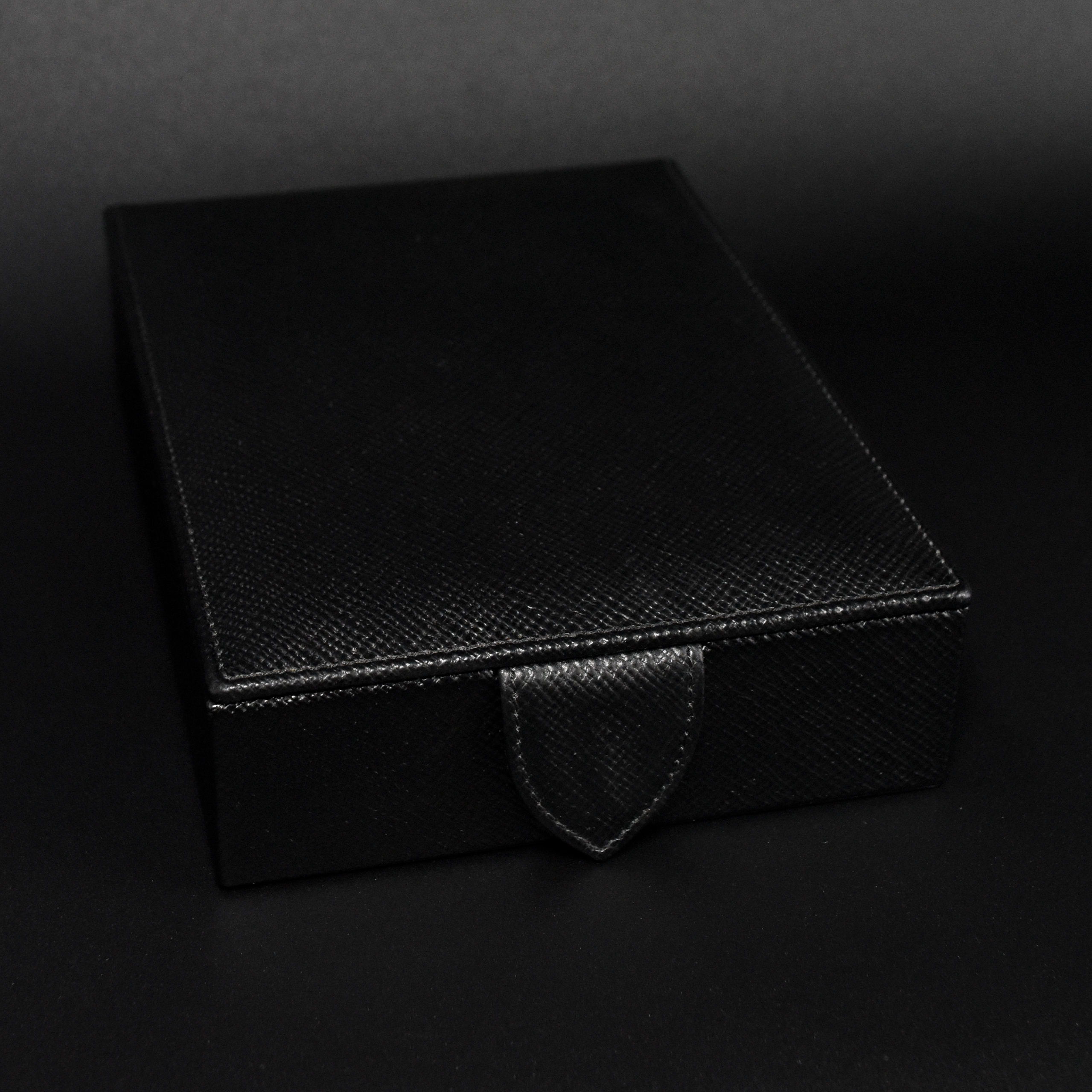Gajillion flips an uncirculated 1934 $1,000 bill into a sharp commentary on value, scarcity, and ingenuity. The bill itself, kept intact and carefully folded into the frame it sits in, becomes the foundation for this intricate piece. On the front, Grover Cleveland trades his presidential stoicism for a butcher’s knife, carving into a rib roast—a cheeky, thought-provoking mix of money, meat, and craft.
This bill is a relic of resilience. Sure, it didn’t beat inflation, but compared to cash stuffed in a mattress or left in a bank, it’s done miles better. It’s a reminder that rare, collectible things—whether art or assets—can hold their own when the rest crumbles. Maybe it’s a lesson in how to think smarter about what you hold onto.
Built to hold $1,000 in Bitcoin, Gajillion spans past and future, putting an old-school note and a digital currency in the same conversation. It asks you to think about what we call “value”—how we make it, how we keep it, and how it changes over time.
On the back, there’s a tiny steak, painstakingly modeled, 3D-printed, and hand-painted, frying in a miniature cast iron skillet with garlic, butter, and rosemary. It’s not there to impress anyone—it’s there to make you think, or maybe just to make you hungry.
Paired with Rare and OG, Gajillion stands as an exclusive, singular work of art—a one-of-one piece that’s as rare as the $1,000 bill it transforms. It’s not just an object; it’s an invitation to rethink value, a wink at absurdity, and a testament to the power of craftsmanship and imagination.
